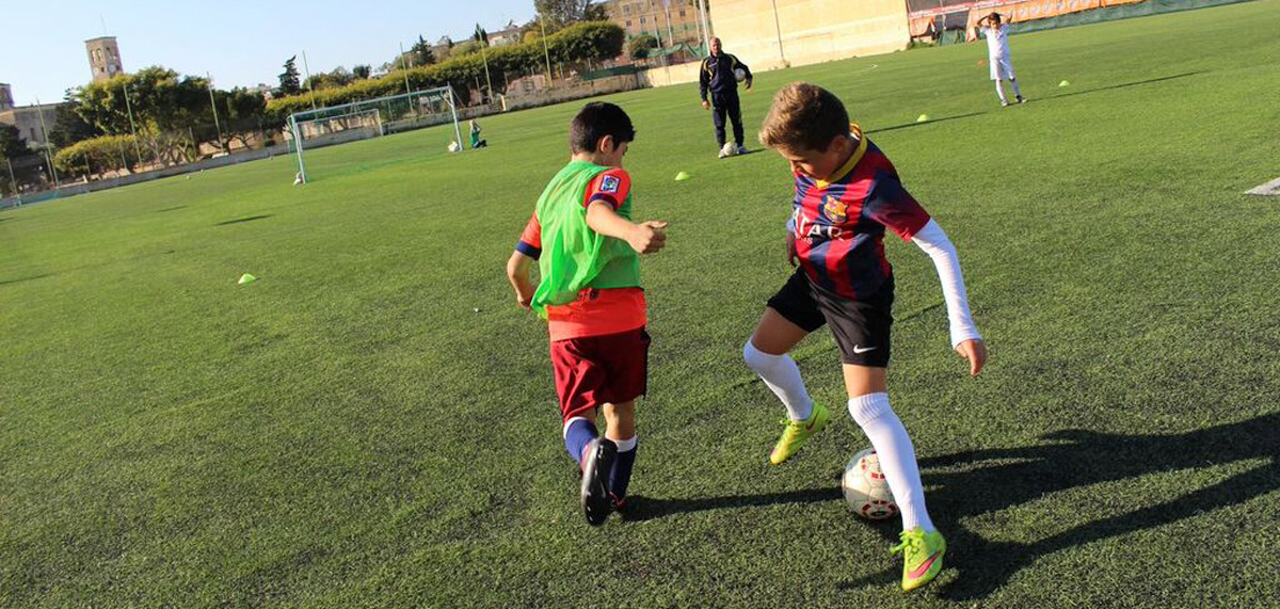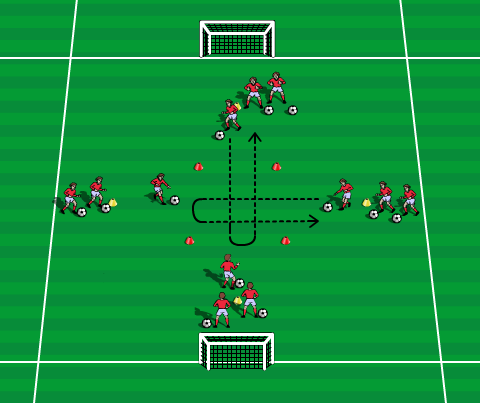

How to approach 10-11 age group? (TRAINING SESSION WITH WARM UP)
I’m always pleased to be a guest coach and lecturer, so this time I was honored to demonstrate practical training session to the number of my colleagues and club administrators. The objective of the session was preparation methods and conducting training session for 10-11 years players, with their principles and guidelines.
Practical session was following presentation that covered characteristics and needs of particular age group, training session content, and expectation and training outcomes.
HOW TO APPROACH THIS AGE?
Players between this age brackets are starting they specialization, they start to gain confidence, develop decision making and increase technique execution. They need to be motivated and willing to learn. Increase the intensity of exercises and gradually teach your players to compete and to except winning and losing as part of the game and learning process. Teach respect of the game, and fair play.
HOW TO CHOOSE THE RIGHT TRAINING SESSION?
Considering all information, coach should be able to prepare training session that includes, if not all, but most of the aspects already known.The proposed training session should be decided on the main topic and developed on the day. That topic should be focused on, from a cocktail of other technical, tactical and physical aspects happening during the practice.
Practice must be organized to develop gradually, progressing from an easy to difficult, depending on the level of players and their response during training. If players do not adopt the concept, the coach should not progress and/or modify the practice. It is important that players at this age succeed, and when they do so, challenge them to the next level.
RAINING SESSION DESIGNED FOR THIS AGE
Having all components in mind, the proposed practical session was designed to initiate with mastering ball control, including a ball to each player:
I PART: WARM UP
SETUP
Set up an area 20×20 meters. Divide players in groups of four, like on the diagram bellow, and place square 5×5 meters in the middle. Each player has a ball. Four players start at the same time dribbling the ball until the first red line in front of their group. They turn and go back to their group. Instruct players to keep the ball close to their feet, keeping the head up and performing different types of turns. As soon as the player arrives back, the next player from the group starts. Players should keep going as a four at the same time. Duration of the exercise is 15 minutes including 4 variations.
- Players dribble the ball to the marker on their right side, turn towards the marker to the left, and finally back to the group.
- Players dribble the ball first to the left side, performing various of different skills to change direction.
3. Players dribble the ball towards the second red line, getting into the small space between four players keeping the ball in close possession.
4. Introduce a player in the middle square who tries to knock the ball out of the square from any of four players.
NOTE: Variation of exercises increases players’ motivation and challenges different skill. Progressing from no pressure, to minimum pressure and, at the end, full pressure including the defender. Including a fun factor and competition increases joy and enthusiasm for main session still to come. If you have goalkeepers in the team, include them in the practice to develop their footwork. To introduce the first touch ball control and passing, instruct players to pass the ball to their teammate from their group after they perform the turning skill.
II PART: MAIN SESSION
AIM
The aim of the main session is dribbling, vision, creativity and decision making in 2v1, 2v2 and 3v2 situation. Also, the session encourages defending in numerical disadvantage, reaction to transition and discipline.
SETUP
Set up playing field 30×20 meters placing the goalposts at the ends; divide ground in the middle with markers. It indicates zones where defender will play. Players are paired up and start their action from one side near the goalpost. Partners aim to score the opposite goalkeeper beating defender in 2v1 situation in each zone. If defenders win the ball, they must score the goalkeeper at their attacking side. When the action finishes, attacking pair moves to the opposite side and other pair starts their action. When all partners finish their turn, the next round starts from the other side, while the second defender becomes the first one. Defenders rotate after two rounds off attacking against same defenders is over.
NOTE: Attackers can dribble the ball to beat defender or they can pass the ball to the teammate. Select the best option and choose the best decision according to the defender’s and teammate’s positioning. If defender wins the ball, attackers should immediately try to gain back the possession of the ball.
PROGRESSION 1
Introduce another defender who can enter any of the zones (or at least one defender must remain in the zone). Attacking players have to deal with initial situation in 2v1 or 2v2 before they enter the second zone.
PROGRESSION 2
Introduce two defenders in every zone and allow three attackers to start. Instruct players to make movements in the empty zones to be able to receive the ball. Encourage them to make overlap movements or forward runs to act as target players.
Coach must always correct his players at the right time, not overload his players with too many information, and he must never break the flow of the play. Allow mistakes when a player has good intention. Encourage his decisions.
After all positive feedback from the audience, it is very satisfactory that the method of work is recognized. Coaches must be knowledgeable, modern, innovative and confident in their work. They should know their players and their needs and create environment that will help their development.










sammy Elliot makalo masebe
I must say I’m lucky & grateful to meet the knowhow soccer coach with its exciting youth training soccer drills/methods then I would like to be part of the khow-how soccer coach plse include me in your data-base I’m highly impressed thanks my mentor…